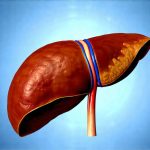Our bodies are astonishingly complex ecosystems, constantly interacting with both internal and external environments. One often-overlooked cornerstone of this intricate system is the gut microbiome – the trillions of microorganisms residing within our digestive tract. For decades, these microbial communities were viewed as passive inhabitants, but modern research reveals they play a profoundly active role in nearly every aspect of health, from digestion and immunity to mental wellbeing and… detoxification. The ability to efficiently eliminate toxins, both naturally produced by metabolism and encountered through environmental exposure, is critical for sustained health and vitality. When this natural process falters due to disruptions in the gut microbiome, it can lead to a cascade of negative consequences impacting various bodily functions and overall wellness.
The intricate relationship between the gut microbiome and detoxification pathways isn’t simply about processing toxins directly; it’s about supporting the body’s inherent detox mechanisms. A healthy gut microbiome acts as a vital first line of defense, influencing how we process nutrients, modulate inflammation, and even impact liver function – all key components of effective detoxification. Disruptions to this microbial balance, often referred to as dysbiosis, can compromise these processes, leading to increased toxic load, systemic inflammation, and potentially chronic disease. Understanding the nuances of this interaction is crucial for optimizing health and fostering a resilient body capable of effectively managing its internal environment. If you are experiencing issues with nausea, it may be related to disrupted gut motility.
The Gut Microbiome & Detoxification Pathways
The liver is often considered the primary detoxification organ, but it doesn’t operate in isolation. It relies heavily on support from other systems, with the gut microbiome playing an unexpectedly pivotal role. Specifically, the gut microbiome influences Phase I and Phase II liver detoxification processes. Phase I involves transforming toxins into less harmful substances through oxidation, reduction, or hydrolysis. This process can create even more reactive intermediates – essentially making the toxin temporarily more dangerous before it’s neutralized. A healthy microbiome helps modulate this phase, preventing an overload of these intermediate compounds.
Phase II builds upon Phase I by conjugating these metabolites with other molecules (like glutathione, sulfate, or glucuronic acid) to make them water-soluble for excretion. Certain gut bacteria directly support Phase II detoxification by producing enzymes that aid in conjugation and enhancing the production of essential nutrients like glutathione – a master antioxidant vital for neutralizing free radicals generated during both Phase I and Phase II processes. A disrupted microbiome can therefore impair Phase II, hindering the body’s ability to effectively eliminate toxins.
Furthermore, the gut itself is an organ of detoxification. The intestinal barrier selectively allows nutrients into the bloodstream while preventing harmful substances from escaping. A compromised gut lining (“leaky gut”), often caused by dysbiosis, increases permeability, allowing toxins and undigested food particles to enter circulation, overwhelming the liver and immune system. This creates a vicious cycle where increased toxin exposure further damages the gut barrier and exacerbates inflammation. Essentially, a healthy microbiome strengthens this barrier, protecting against systemic toxicity. You can learn more about leaky gut and how it affects your body.
How Dysbiosis Impacts Detoxification
Dysbiosis, or microbial imbalance, occurs when the diversity and abundance of beneficial bacteria are reduced, while potentially harmful bacteria flourish. This can stem from numerous factors including poor diet (high in processed foods, sugar, and low in fiber), antibiotic use, chronic stress, environmental toxins, and even birth method. The consequences for detoxification efficiency are significant.
- Reduced production of key detoxifying enzymes: As mentioned earlier, a balanced microbiome contributes to Phase II liver detoxification by producing necessary enzymes. Dysbiosis diminishes this enzymatic activity.
- Impaired gut barrier function: Harmful bacteria can damage the intestinal lining, leading to increased permeability and systemic inflammation – contributing to “leaky gut.”
- Increased production of toxic metabolites: Certain harmful bacteria produce toxins themselves (like lipopolysaccharide – LPS), further burdening detoxification pathways and triggering immune responses.
- Altered bile acid metabolism: Bile acids are essential for fat digestion and the elimination of certain toxins. The microbiome plays a role in their modification; dysbiosis can disrupt this process, hindering toxin removal.
The impact isn’t limited to liver function. An imbalanced gut microbiome also affects the kidneys – another vital organ involved in waste removal. Dysbiosis can alter kidney filtration rates and contribute to the formation of kidney stones, further compromising detoxification processes. It’s a holistic system, and disruption in one area inevitably impacts others. You may find that gut test results can reveal important information about your overall health.
Restoring Gut Health for Enhanced Detoxification
Rebuilding a healthy gut microbiome isn’t about quick fixes; it requires a long-term commitment to lifestyle changes. The following steps can help restore microbial balance and support the body’s natural detoxification processes:
- Dietary Modifications: Focus on a whole-food diet rich in fiber, prebiotics (foods that feed beneficial bacteria – like garlic, onions, asparagus), and probiotics (fermented foods containing live cultures – like yogurt, kefir, sauerkraut). Reduce processed foods, sugar intake, and artificial sweeteners.
- Minimize Antibiotic Use: While sometimes necessary, antibiotics can decimate the gut microbiome. Use them only when absolutely required and consider probiotic supplementation after a course of antibiotics to help restore microbial balance.
- Stress Management: Chronic stress negatively impacts gut health. Incorporate stress-reducing practices like meditation, yoga, deep breathing exercises, or spending time in nature.
- Limit Toxin Exposure: Reduce exposure to environmental toxins by choosing organic foods when possible, using natural cleaning products, and filtering water.
The Role of Specific Nutrients & Compounds
Certain nutrients play a particularly crucial role in supporting both gut health and detoxification pathways. Glutathione, as previously mentioned, is vital for Phase II liver detoxification, and its production can be enhanced by precursors like N-acetyl cysteine (NAC) and selenium. Sulfur-rich foods (like broccoli, cauliflower, cabbage) also support glutathione synthesis.
Furthermore, adequate hydration is essential for all detoxification processes – from the liver and kidneys to bowel regularity. Fiber promotes healthy bowel movements, aiding in toxin elimination through stool. Finally, compounds found in cruciferous vegetables (broccoli sprouts, kale) have been shown to upregulate Phase I and Phase II detoxification enzymes, providing additional support for metabolic clearance. It’s important to remember that these are supportive measures; they work best as part of a holistic approach focused on long-term lifestyle changes rather than relying on isolated supplements or interventions. If you think your microbiome needs a reset, consider making these changes. Understanding how cold weather can impact your system is also important for maintaining a healthy gut. Finally, it’s helpful to build a schedule with your doctor for regular testing and monitoring of gut health.


















